Warmaster – Not for THE, just Warmaster
With the teaser for an epic, small scale system coming to the Horus Heresy, I put my own epic 30k project on hold until we know more. Especially as I like get a feel for what's coming, base sizes etc., I will pick up another system from my backlog and move it forward in the schedule - Warmaster.

Why Warmaster?
I simply don't have the ressources in terms of available time and space to cover one of these amazing 4-6.000 point lists from Warhammer. I don't see myself painting 200 state troops in 28mm and having barely a chance to put them to use, nor store them properly as I can use that room for multiple other projects. And with the possibilities of a 3d printer and the availability of different whole armies as STLs and printing at home, this is a very valid and approachable project. Especially as going for the original miniatures is not really an option. First of all, they are quite scarce and in the rare times they are available 2nd hand, the prices are through the roof. And as they are post-Middlehammer era, I don't really have a connection to that miniature range, so there are no nostalgic feelings or motivation, to go for the classic range.
What is Warmaster?
The original version of Warmaster was released in 2000 as a mass combat battle system in 10-12mm scale, whole regiments would be units made from 3 stands (bases) and thus giving you whole armies that could be placed on the cover of a White Dwarf magazin. In 2004 the game was moved over into Specialist Games, with the coverage moving from White Dwarf towards the Fanatic magazine, but with a lot of content available as downloads for free. Just after using the ruleset as part of the Storm of Chaos campaign and receiving quite a bit of attention with additional miniatures for that conflict. As part of the Specialist Games development, in the 2006s a rather huge supplement covering the six original, but revised army lists and seven new armies to the game.
While the game was one of many games supported by the Specialist Games unit of Games Workshop and had limited ressources as such, in 2010 the 2nd edition of Warmaster was released, with compiled (fan / community rules, along with content of the Warmaster magazine) and clarified rules, written in the decade since it was original released. In 2013 the support was dropped completely, Games Workshop stopped the production of the miniatures and stock ran out. Similar to other Specialist publications, a freely available Living Rulebook, along with the supplements and archived articles, used to be available from the Specialist Games page / forum, which is offline by now.
Yet, in 2017, the community gathered and released a revamped ruleset, called Warmaster Revolution. This brought various things together, a growing interest in the game, a growing community, and especially around the 2020s, when resin printing became more and more available, various content creators produced STLs, for stand ins, which are far more up to date than some of the rather aged third party miniature ranges in the scale. And that's where we are today.
Within Games Workshop were two spin-offs of the Warmaster rules, the first was Battle of the Five Armies, a Lord of the Ring variant of the Warmaster rules, covering the battle from the Hobbit, and the other was for the Warhammer Historical daughter company, Warmaster Ancients, covering the conflicts from the Egyptians until the Normans, with a later addition of medieval armies in the Warmaster Ancients Armies supplement. The game was written by Rick Priestley (both the original Warmaster and later Warmaster Ancients) and the rule set later further progressed into Black Powder (and it's spin-offs Hail Caesar and Pike & Shotte) in 2009.
Where to start?
With the various content creators, there is next to no limitation regarding the ranges. There's Chaos, with mortals, beasts and demons available, various human factions, Dogs of War, Dwarves, Elves and even Lizardmen. Thus giving me the option to basically cover all the major conflicts from Warhammer. And I mean conflict not just army, as usual I want two forces for a system and so do I with Warmaster. The idea is to have a 3.000 point force of each. This size even would give me the option for mixed lists, like they did with Storm of Chaos. And that brings us to the first potential conflict.
Storm of Chaos, this was the name of the 2004 Warhammer Fantasy campaign, covering the great assaults launched by the servants of Chaos upon the Old World, beginning with the invasion of Kislev and Empire, to conquer the rest of the continent. The big players were Archaon on the side of Chaos, united a huge undivided chaos force, including Norse tribes, Daemons, Beastmen etc. and an Alliance of the forces of Order under Valten, the latest champion of Sigmar. This was actually the prelude or foreshock for the actual End Times, that stopped the Old World and kicked off the Age of Sigmar. This would give me multiple options, for example either build a pure 3.000 point list of Empire and Chaos, replacing the models for certain units with those from allied contingents, or split them 2.000 / 1.000 or 1.500 each and have Empire and Dogs of War on one side and Chaos and Chaos Daemons on the others. There is no Beastmen list for Warmaster, you would use the models to represent Marauders for example. Chaos vs Empire would provide an asymmetrical experience, as you have a mass army on one side and a more elite on the other. Quite the promissing idea.
Vampiric Wars. This was not an official campaign, but major events in the lore. All three Vampiric Wars were fought under the command of a Vampire of the von Carstein blood line, invading the Empire. The first Vampiric War was Vlad von Carstein, who made it til Altdorf and laid siege to the city, but was defeated by the Grand Theogonist. In the second Vampiric War, the claimants for Vlad's succession had an internal struggle for power, which was won by Konrad von Carstein, the conflict widened not only fighting against the Empire but Dwarfs as well, and this alliance would mark the end of Konrad's killing spree across the old world. After Konrads death, Mannfred von Carstein became the ruler of Sylvania and planned in silence another attack on the Empire, that would be the third Vampiric War and end in the Battle of Hel Fenn, after laying waste to large parts of the Empire, but being pushed back to the borders of Sylvania. This story arch would provide another iconic clash of good vs evil, light vs darkness, including the option to mix in Dwarf units to the Empire army and have a large undead horde on the other side. Again, similar to the Storm of Chaos, not a bad choice, but maybe the two armies are both quite "hordy" and the undead aren't as diverse or colourful as the Chaos forces.
A Waaagh! Again Empire but versus a different foe, this time the greenskins with a huge Waaagh! This would be something, I'd do if this was a partner project, and somebody else takes care of the orcs. As much as I think this is an interesting conflict, I don't fancy the ork range enough to do this, and in addition, this would be another mass vs mass army scenario, so this is the least likely option of all of them.
The Warhammer Fantasy 5th Edition Revival - Ditching the Empire as one party entirely would be going for the conflict from the 5th edition of WHFB - Bretonnians vs Lizardmen. There was a international campaign accompanying the release, played in the stores but with different story lines depending on the country. In the UK and Australia (most likely United States as well) there was the Dark Conspiracy campaign, ending in the Battle of Antoch (a Crusader City in Araby), and in Germany it was the Battle for Chateau d'Or campaign, ending in a siege near Gisoreaux, played by the winners of the store campaign. The storyline basically is that in the 1700s of the Warhammer timeline, a Bretonian expedition landed in Lustria, stole artefacts and brought them back to the Old World, and about 700 years later in the "current" Warhammer timeline, a huge Lizardman army under the command of Mazdamundi of Hexoatl went to the Old World to retrieve these artifacts. In the Dark Conspiracy events they laid siege to the city of Antoch, in the Chateau d'Or events it was the city of Gisoreaux. This narrative would give me options to play in Lustria as well as the old world, include sieges, have rather unusual armies with the Bretonians and Lizardmen (which would provide me with different paint jobs to what I have painted until now) and still give me the option to use for example Arabian, Estalian or Tilean units.
What else do I need?
The rules are covered as PDFs, there's a Army Selector tool incl. links to the army lists for the scenarios above. The miniatures would be 3d printed, so I only would need to get my hands on the STLs, which are available via Gumroad, Patreons or MyMinifactory in most cases. Beyond that, a couple of D6, a measuring tape with CM (!) and a notepad or a few sheets of paper to put down some notes. You're good with a 4 by 6 ft table at the start that you would use for most of your other games, for larger games a 4 by 8 ft table is recommended. Some hills and smaller 28mm trees can be used in 12mm as well, but some buildings or ruins are a great addition to your battlefield, but for the start some generic terrain will be sufficient. As for buildings, some model train buildings in scale N (and to some parts in scale Z) can be used, beyond that 3d printing gives you a lot of options here as well.
What's next?
Narrowing down the setting and ordering a one or two liters of resin.
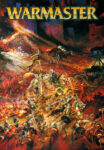
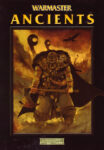
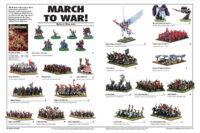
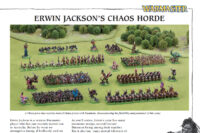
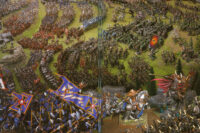
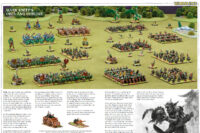
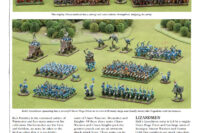












Leave a Reply